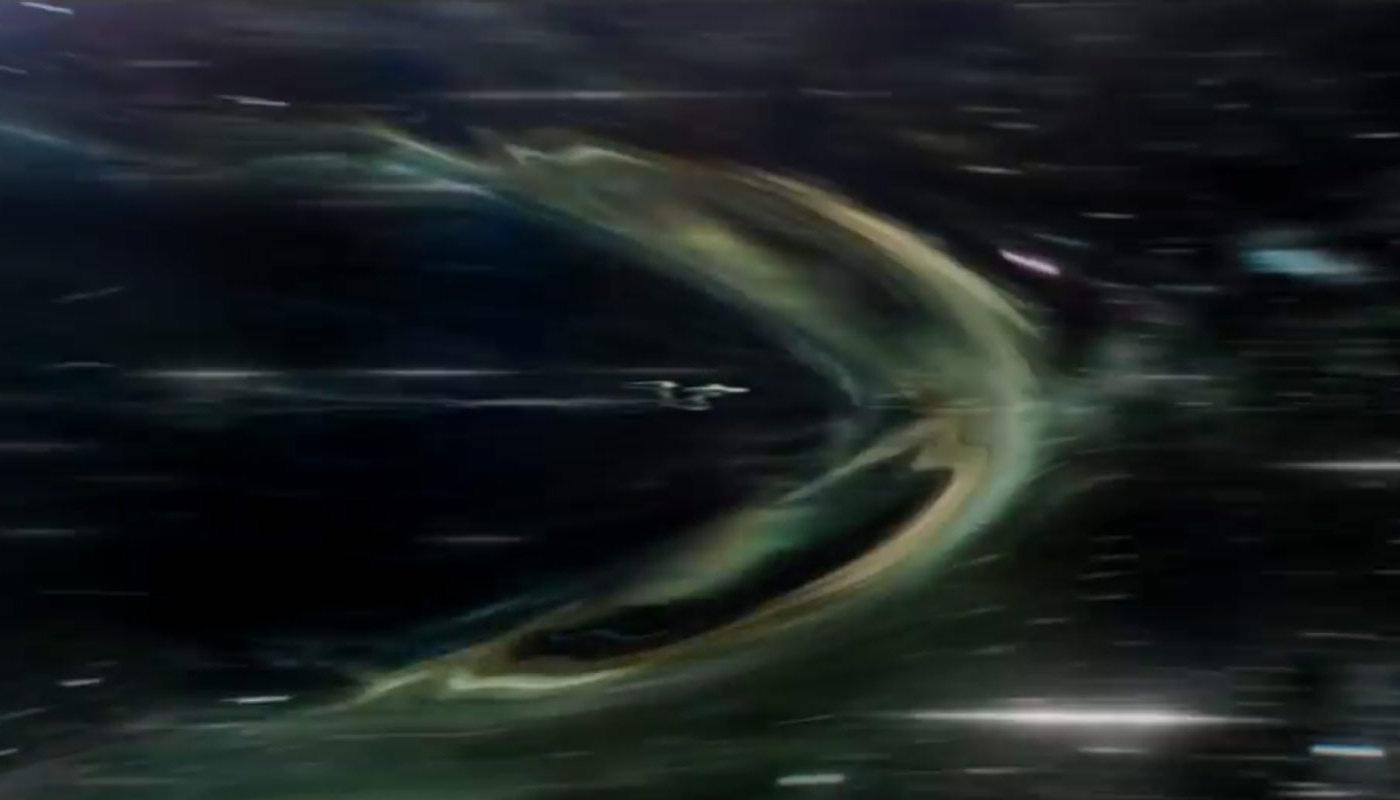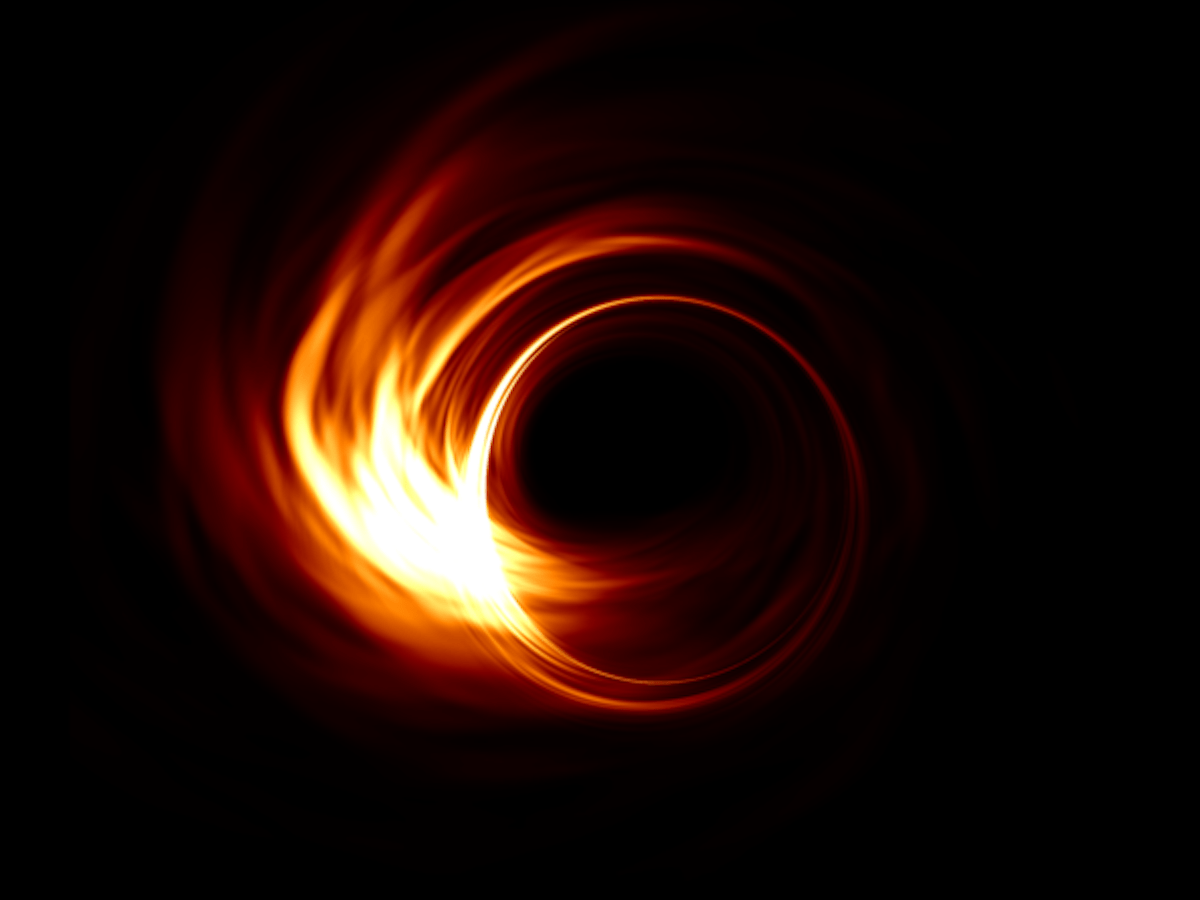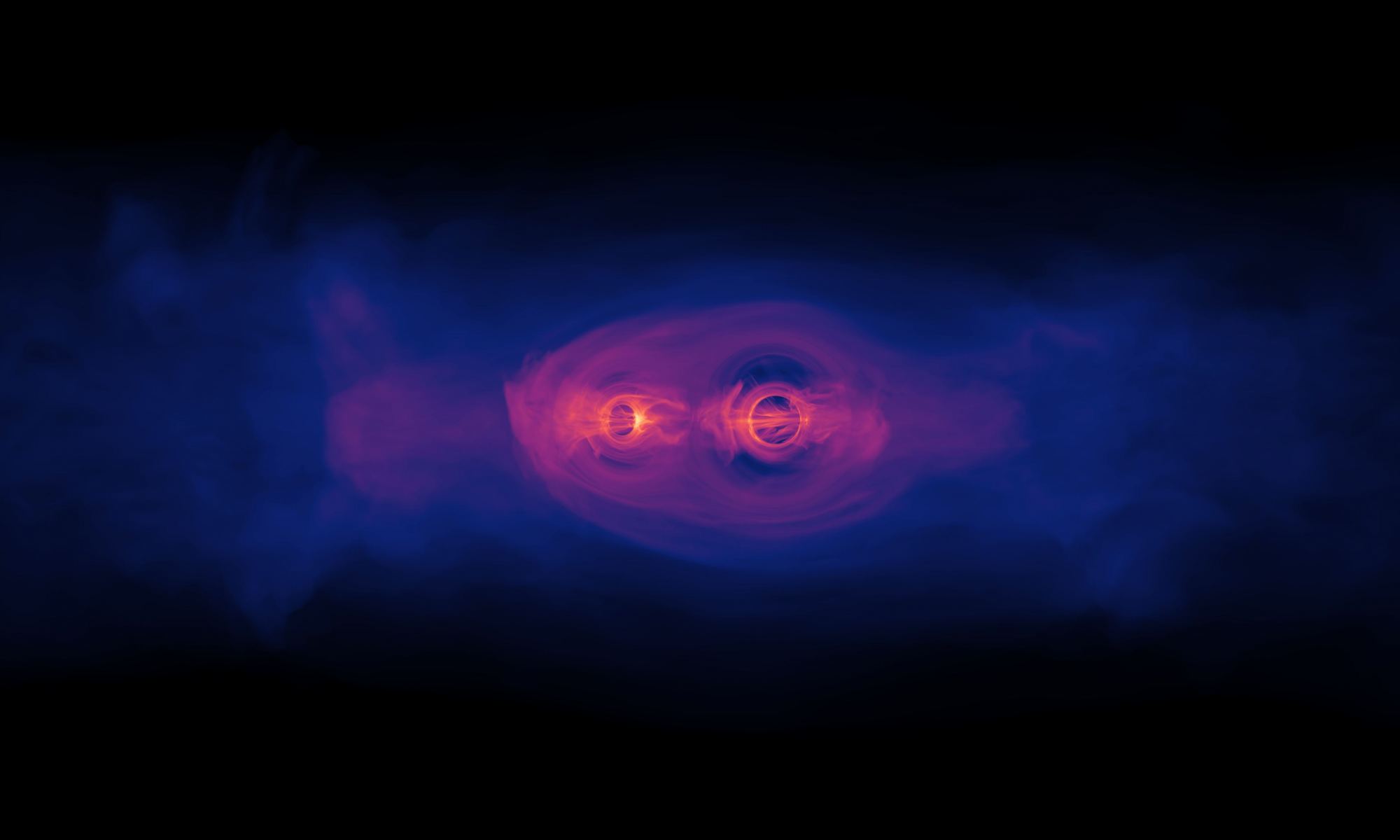If you want a galaxy-spanning science fiction epic, you’re going to need faster than light travel. The alternative is taking decades or centuries to reach an alien star system, which isn’t nearly as much fun. So, you start with some wild scientific idea, add a bit of technobabble, and poof! Quam Celerrime ad Astra. Everything from wormholes to hyperspace has been used in sci-fi, but perhaps the best known FTL trope is warp drive.
Continue reading “Alcubierre Gives us an Update on his Ideas About Warp Drives”If We Used the Sun as a Gravitational Lens Telescope, This is What a Planet at Proxima Centauri Would Look Like

As Einstein originally predicted with his General Theory of Relativity, gravity alters the curvature of spacetime. As a consequence, the passage of light changes as it encounters a gravitational field, which is how General Relativity was confirmed! For decades, astronomers have taken advantage of this to conduct Gravitational Lensing (GL) – where a distant source is focused and amplified by a massive object in the foreground.
In a recent study, two theoretical physicists argue that the Sun could be used in the same way to create a Solar Gravitational Lens (SGL). This powerful telescope, they argue, would provide enough light amplification to allow for Direct Imaging studies of nearby exoplanets. This could allow astronomers to determine if planets like Proxima b are potentially-habitable long before we send missions to study them.
Continue reading “If We Used the Sun as a Gravitational Lens Telescope, This is What a Planet at Proxima Centauri Would Look Like”Black Holes Gain new Powers When They Spin Fast Enough
General relativity is a profoundly complex mathematical theory, but its description of black holes is amazingly simple. A stable black hole can be described by just three properties: its mass, its electric charge, and its rotation or spin. Since black holes aren’t likely to have much charge, it really takes just two properties. If you know a black hole’s mass and spin, you know all there is to know about the black hole.
Continue reading “Black Holes Gain new Powers When They Spin Fast Enough”We actually don’t know how fast the Milky Way’s supermassive black hole is spinning but there might be a way to find out
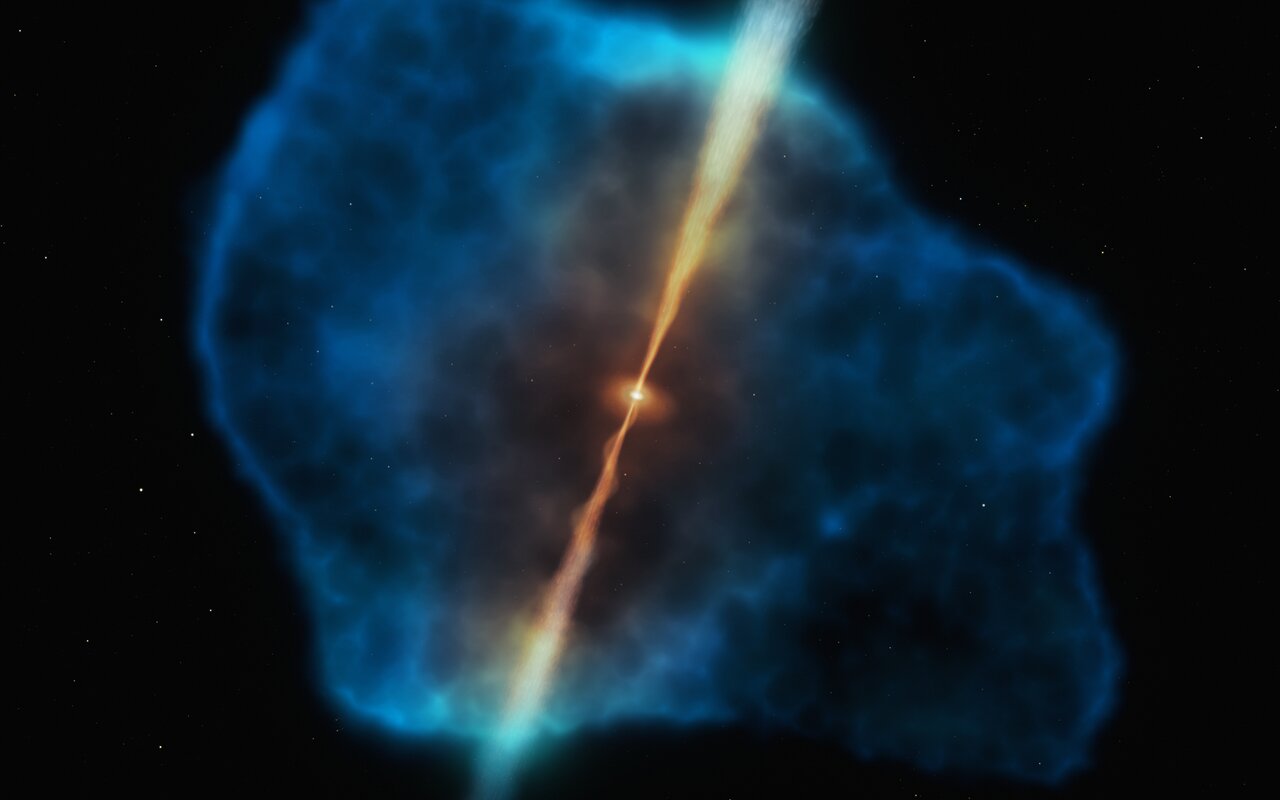
Unless Einstein is wrong, a black hole is defined by three properties: mass, spin, and electric charge. The charge of a black hole should be nearly zero since the matter captured by a black hole is electrically neutral. The mass of a black hole determines the size of its event horizon, and can be measured in several ways, from the brightness of the material around it to the orbital motion of nearby stars. The spin of a black hole is much more difficult to study.
Continue reading “We actually don’t know how fast the Milky Way’s supermassive black hole is spinning but there might be a way to find out”Black Holes Make Complex Gravitational-Wave Chirps as They Merge
Gravitational waves are produced by all moving masses, from the Earth’s wobble around the Sun to your motion as you go about your daily life. But at the moment, those gravitational waves are too small to be observed. Gravitational observatories such as LIGO and VIRGO can only see the strong gravitational waves produced by merging stellar-mass black holes.
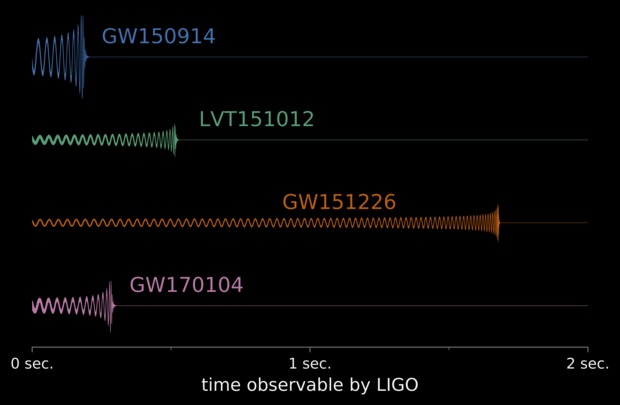
Gravitational-Wave Lensing is Possible, but it’s Going to be Incredibly Difficult to Detect

Gravity is a strange thing. In our everyday lives, we think of it as a force. It pulls us to the Earth and holds planets in orbits around their stars. But gravity isn’t a force. It is a warping of space and time that bends the trajectory of objects. Throw a ball in deep space, and it moves in a straight line following Newton’s First Law of Motion. Throw the same ball near the Earth’s surface, and it follows a parabolic trajectory caused by Earth’s warping of spacetime around it.
Continue reading “Gravitational-Wave Lensing is Possible, but it’s Going to be Incredibly Difficult to Detect”Einstein. Right again
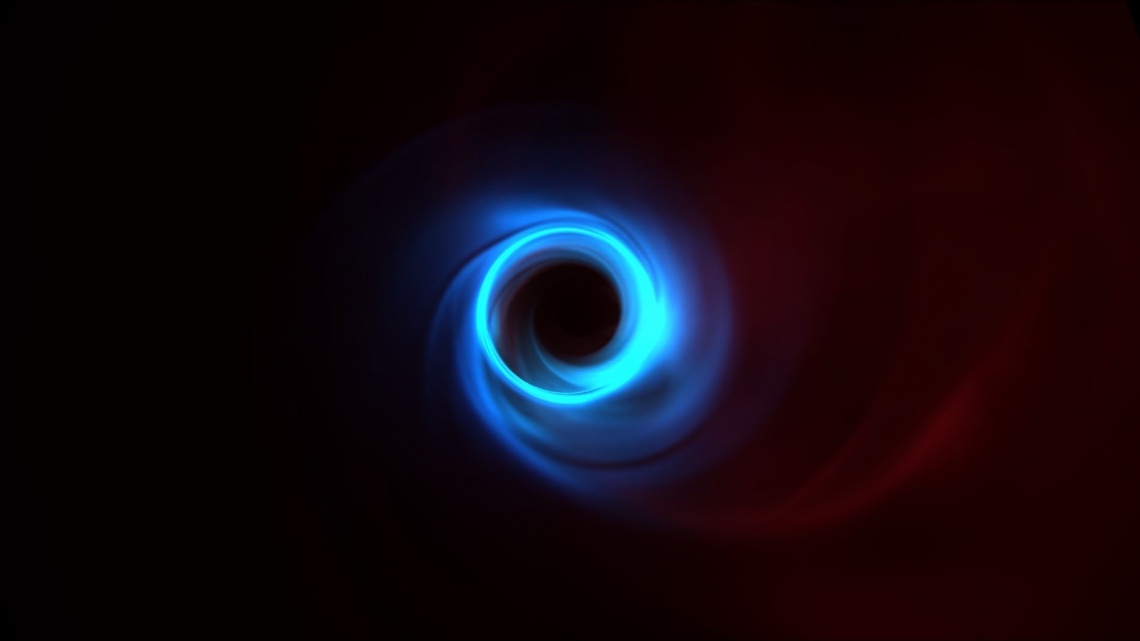
Most of what we know about black holes is based upon indirect evidence. General relativity predicts the structure of a black hole and how matter moves around it, and computer simulations based on relativity are compared with what we observe, from the accretion disks that swirl around a black hole to the immense jets of material they cast off at relativistic speeds. Then in 2019, radio astronomers captured the first direct image of the supermassive black hole in M87. This allows us to test the limits of relativity in a new and exciting way.
Continue reading “Einstein. Right again”The Shadow from M87’s Supermassive Black Hole has Been Observed Wobbling Around the Galaxy for Years
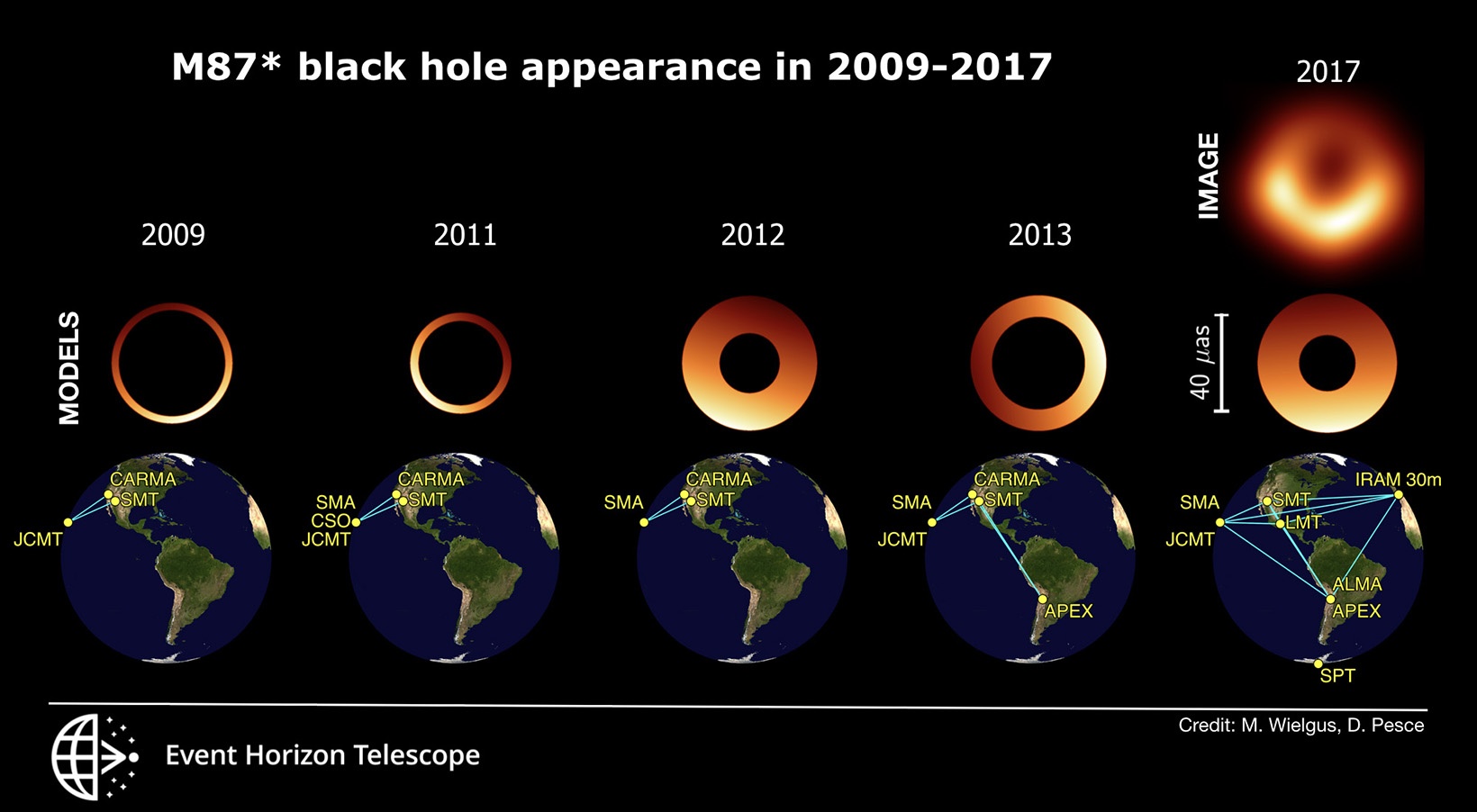
In April 2019, the Event Horizon Telescope (EHT) released the first direct image of a black hole. It was a radio image of the supermassive black hole in the galaxy M87. Much of the image resulted from radio light gravitationally focused toward us, but there was also some light emitted by gas and dust near the black hole. By itself, the image is a somewhat unimpressive blurry ring, but the data behind the image tells a more detailed story.
Continue reading “The Shadow from M87’s Supermassive Black Hole has Been Observed Wobbling Around the Galaxy for Years”One Theory Beyond the Standard Model Could Allow Wormholes that You Could Actually Fly Through

Wormholes are a popular feature in science fiction, the means through which spacecraft can achieve faster-than-light (FTL) travel and instantaneously move from one point in spacetime to another. And while the General Theory of Relativity forbids the existence of “traversable wormholes”, recent research has shown that they are actually possible within the domain of quantum physics.
The only downsides are that they would actually take longer to traverse than normal space and/or likely be microscopic. In a new study performed by a pair of Ivy League scientists, the existence of physics beyond the Standard Model could mean that there are wormholes out there that are not only large enough to be traversable, but entirely safe for human travelers looking to get from point A to point B.
Continue reading “One Theory Beyond the Standard Model Could Allow Wormholes that You Could Actually Fly Through”Fastest Star Ever Seen is Moving at 8% the Speed of Light
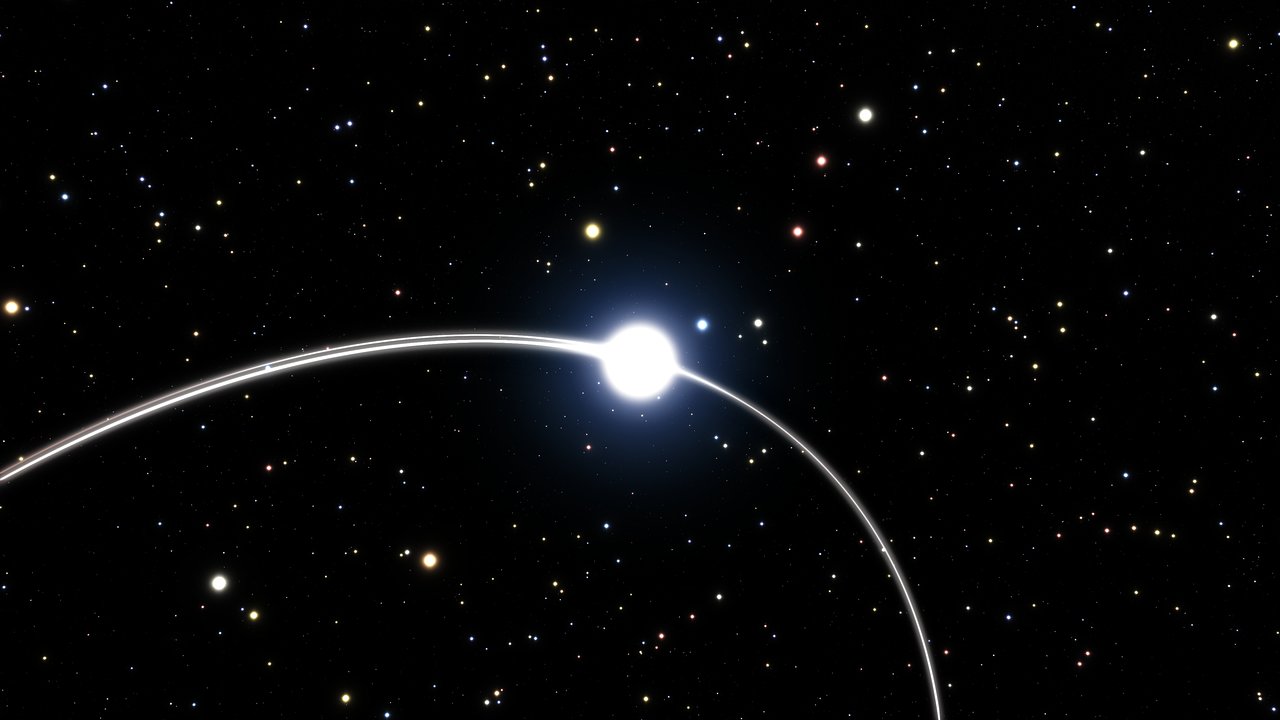
In the center of our galaxy, hundreds of stars closely orbit a supermassive black hole. Most of these stars have large enough orbits that their motion is described by Newtonian gravity and Kepler’s laws of motion. But a few orbits so closely that their orbits can only be accurately described by Einstein’s general theory of relativity. The star with the smallest orbit is known as S62. Its closest approach to the black hole has it moving more than 8% of light speed.
Continue reading “Fastest Star Ever Seen is Moving at 8% the Speed of Light”
